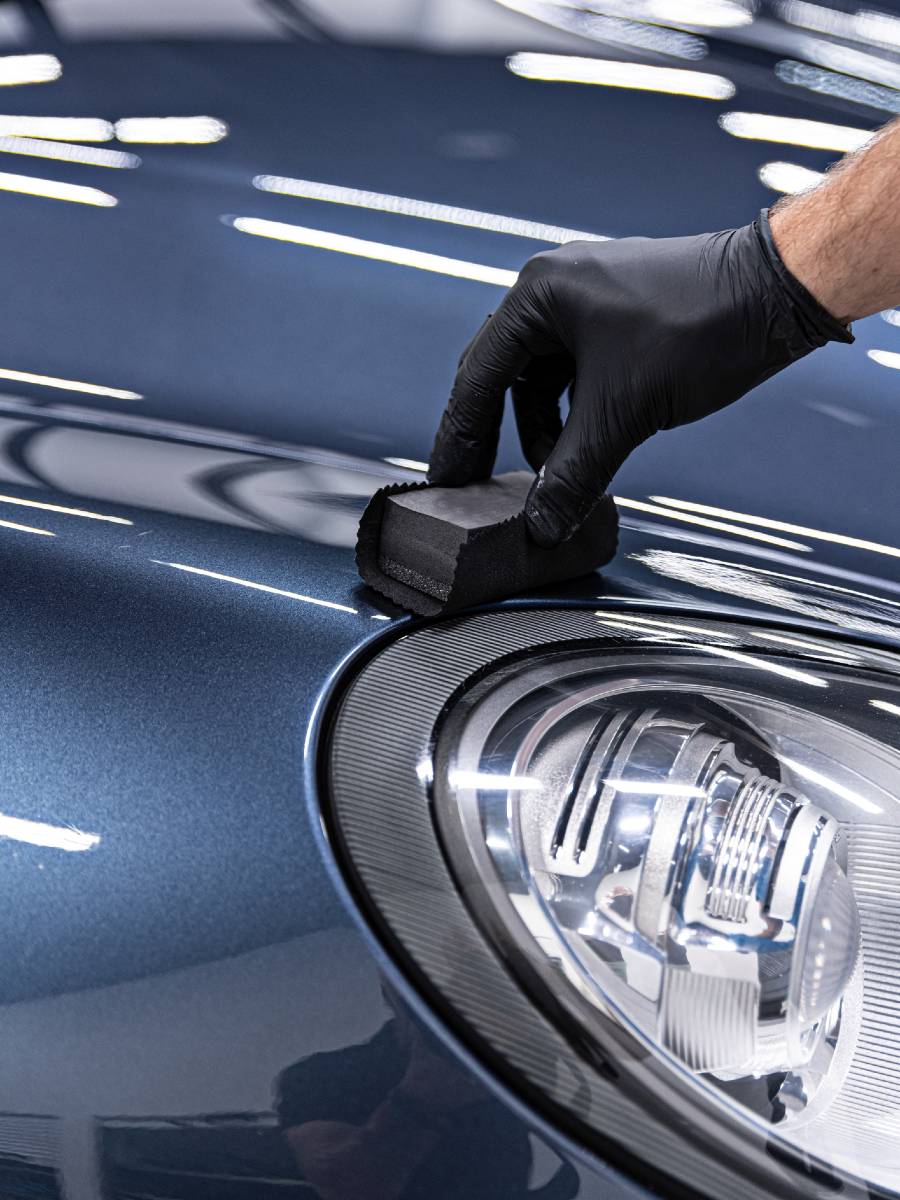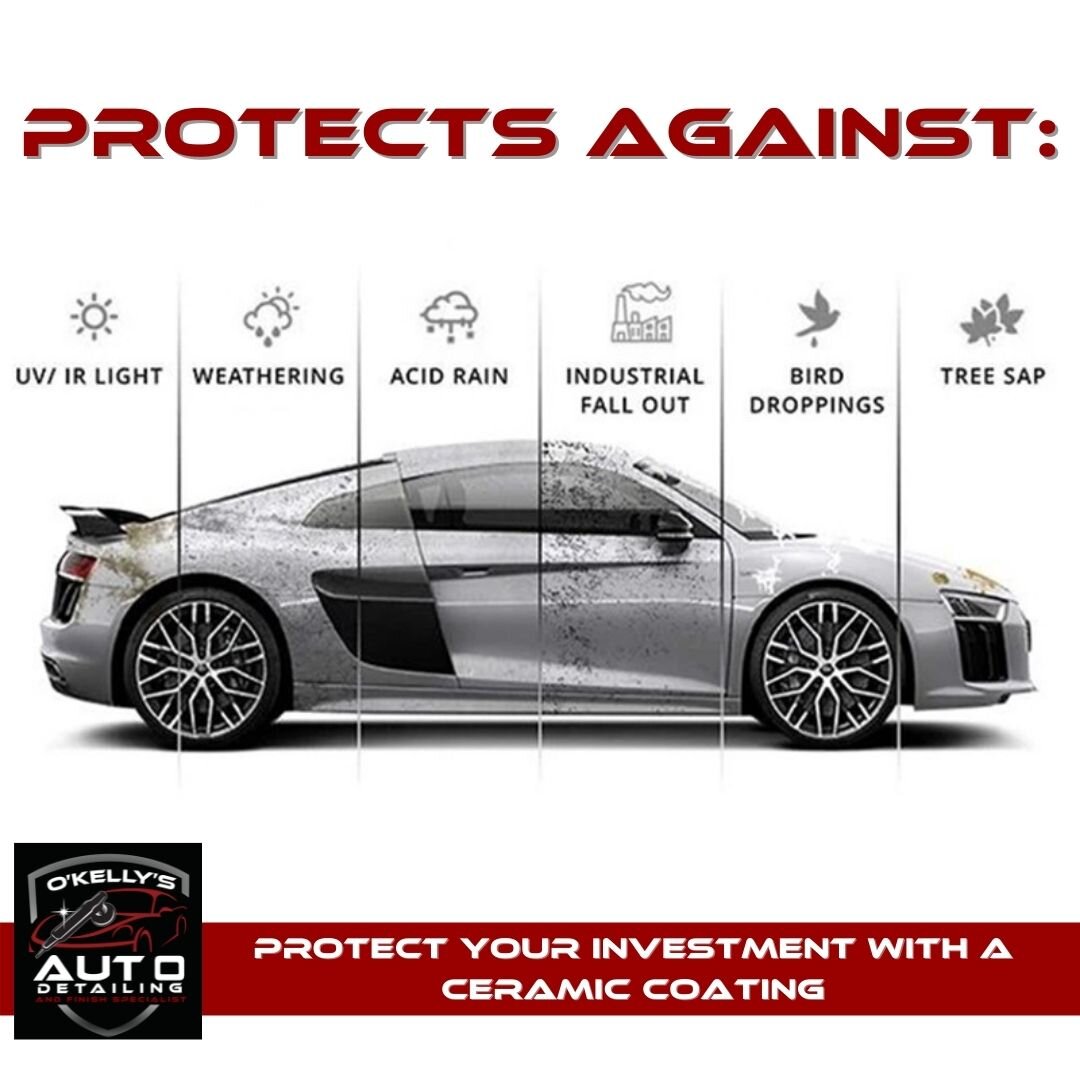What to Expect During Your Ceramic Coating Application Process
What to Expect During Your Ceramic Coating Application Process
Blog Article
The Role of Ceramic Layer in Safeguarding Your Cars and truck's Paint From Environmental Damages
Ceramic coating has actually emerged as an advanced option for vehicle owners looking for to maintain the integrity of their automobile's outside. As we discover the nuances of ceramic finishing, it comes to be evident that the choice to execute this safety action can considerably influence your automobile's long life and visual.
What Is Ceramic Covering?
Ceramic finishing is a sophisticated fluid polymer related to the external surfaces of a vehicle, made to provide a resilient layer of security for the paint. This ingenious option develops a chemical bond with the automobile's factory paint, creating a durable and hydrophobic shield. The finishing contains nanoparticles that complete the microscopic flaws in the paint, resulting in a smooth surface that enhances gloss and shine.
Generally, ceramic coverings are available in various formulations, permitting for various degrees of security and durability. While some products can last for several months, others supply defense for a number of years, depending upon the thickness of the application and environmental variables. The application process requires meticulous preparation, consisting of cleaning, decontaminating, and polishing the vehicle's surface to guarantee ideal adhesion of the coating.

Advantages of Ceramic Finishing
One of the primary benefits of applying a ceramic layer is the outstanding security it offers to vehicle paint. This innovative finish forms a sturdy layer that shields the lorry's surface area from a variety of environmental hazards, including UV rays, acid rainfall, bird droppings, and tree sap. By offering this robust defense, ceramic coverings dramatically decrease the risk of fading and etching, preserving the automobile's aesthetic appeal gradually.
In enhancement to protection, ceramic finishes are renowned for their hydrophobic buildings, which repel water and dirt, making it easier to keep a tidy automobile. This self-cleaning result lowers the frequency of cleaning, conserving both time and resources. Ceramic finishes improve the depth of the paint's gloss, resulting in a vibrant and sleek look that raises the total look of the car.
An additional remarkable advantage is the durability of ceramic finishes. Unlike traditional waxes or sealers that require regular reapplication, ceramic coatings can last several years, supplying a cost-efficient solution for cars and truck owners looking for long-lasting protection. On the whole, purchasing ceramic covering causes enhanced toughness, lowered upkeep, and sustained visual charm for automotive paint.
Just How Ceramic Coating Functions
A ceramic coating operates with a chemical bonding process that produces a safety layer on the car's paint surface. This innovative remedy makes use of sophisticated nanotechnology, where microscopic particles of silica are suspended in a liquid form - ceramic coating. Upon application, these fragments bond with the factory paint, developing a resilient and hydrophobic layer that improves the vehicle's surface area
The primary element of ceramic finishes, silicon dioxide (SiO2), contributes to the covering's strength and strength. When treated, the coating transforms into a hard, glass-like finish that guards the paint from ecological pollutants such as dust, UV rays, bird droppings, and tree sap. This molecular bond leads to a surface that is not only immune to scratches however also easier to clean up, as dust and grime are less most likely to adhere.
Additionally, the hydrophobic buildings of ceramic finishings trigger water to grain and slide off, reducing the possibilities of water places and natural resource. This safety barrier effectively extends the life of the paint and maintains the car's visual appeal, providing automobile proprietors a lasting service for paint protection.
Application Process of Ceramic Layer
When taking into consideration the application of ceramic coating, preparation is essential to achieving optimal outcomes. The initial step involves thoroughly washing the lorry to remove dirt, gunk, and impurities from the surface. This commonly includes a decontamination procedure using clay bars or chemical cleaners to make certain the paint is perfectly his response tidy. Any type of scrapes or flaws should be dealt with at this stage, as the finishing will bond with the surface underneath.

Ceramic finish is then applied in little areas, typically using an applicator pad. It is important to operate in also strokes, ensuring uniform protection. The covering ought to be allowed to heal for a specified time, which can vary relying on have a peek at this site the product utilized. After the preliminary application, a high-quality microfiber towel is utilized to rub the surface area, improving gloss and making certain a smooth finish. The vehicle should be left to treat in a regulated environment to allow the finishing to totally bond with the paint.
Long-Term Upkeep and Care
Accomplishing a successful ceramic covering application establishes the structure for long-term protection, yet appropriate upkeep is important to maintaining its benefits. Normal washing is essential; using a pH-neutral vehicle hair shampoo will help keep the coating's stability without causing damage. Prevent automated car cleans that usage abrasive materials, as they can compromise the finish's surface area.

Furthermore, using a ceramic coating upkeep spray can enhance the existing layer, offering an added increase in protection and sparkle. It's a good idea to perform this every 3 to six months, relying on environmental direct exposure.
Last but not least, car park in shaded locations or using vehicle covers can avoid long term direct exposure to dangerous UV rays and environmental contaminants, even more prolonging the life of your ceramic finishing. By adhering to these maintenance practices, you can ensure your car's coating remains safeguarded and visually appealing for years to find.
Conclusion
In recap, ceramic covering serves as a vital protective step for automotive paint, properly securing automobiles from a variety of ecological hazards. Its capacity to create a robust hydrophobic obstacle not just enhances aesthetic allure yet additionally dramatically lowers the regularity and intensity of upkeep called for. The lasting nature of this sophisticated polymer highlights its value in preserving automobile integrity and appearance, ultimately adding to a much more sturdy and pop over to this site aesthetically appealing automobile coating.
Ceramic covering is a sophisticated liquid polymer used to the outside surface areas of an automobile, developed to offer a durable layer of security for the paint. Ceramic layers enhance the deepness of the paint's gloss, resulting in a polished and dynamic appearance that boosts the general look of the vehicle.
A ceramic covering operates through a chemical bonding process that develops a protective layer on the automobile's paint surface.The primary component of ceramic finishings, silicon dioxide (SiO2), contributes to the finish's toughness and resilience.In recap, ceramic finishing serves as an important safety action for vehicle paint, effectively securing lorries from an array of ecological risks.
Report this page